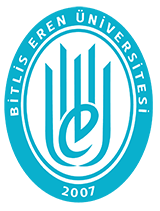| dc.description.abstract | This study focuses on phase change material-based passive thermal protection of electronic
components that release heat for a period of time. Firstly, an investigation was carried out in
terms of PCM thickness for thermal protection and it was determined that an 11 mm thickness
was the appropriate PCM thickness. It was determined that the thermal conductivities in the
solid phase could be improved by 35.9%, 119.2%, and 178.6%, respectively, if 1%, 3%, and 5%
GNP were doped into the PCM. In the case of 1%, 3%, and 5% GNP doping, it was determined
that the melting temperatures of PCM did not change, whereas the latent heat of melting
decreased slightly depending on the GNP fraction. The deterioration in the latent melting heat
for 5% GNP/RT-44 composite was measured as 5.4%. Then, the thermal protection performance
of PCM, Fin/PCM, Nanoparticle/PCM, and Nanoparticle/Fin/PCM composites on an electronic
component that releases heat for a period of time was compared in terms of maximum surface
temperature and maximum surface temperature difference. The results indicated that the
Nanoparticle/PCM thermal protection exhibited a performance improvement effect
predominantly during sensible heat storage, whereas the Fin/PCM thermal protection
demonstrated an improvement in performance during both sensible heat and latent heat storage.
While all thermal protection methods were successful at 3 W heating power, only PCM thermal
protection equipped with six fins (6F/PCM) was successful at 6W heating power. At 6 W heating
power, maximum temperature and maximum temperature difference performances were
improved by 15.3% and 45.2%, respectively, with 6F/PCM thermal protection compared to
PCM thermal protection only. An increase in the GNP mass fraction above 3% has been
demonstrated to have a detrimental effect on thermal protection. With 3% GNP/6F/PCM hybrid
thermal protection, it was determined that the maximum temperature and maximum temperature
difference performances have the potential to be improved by 22.3% and 53.4% compared to
PCM thermal protection. | tr_TR |














